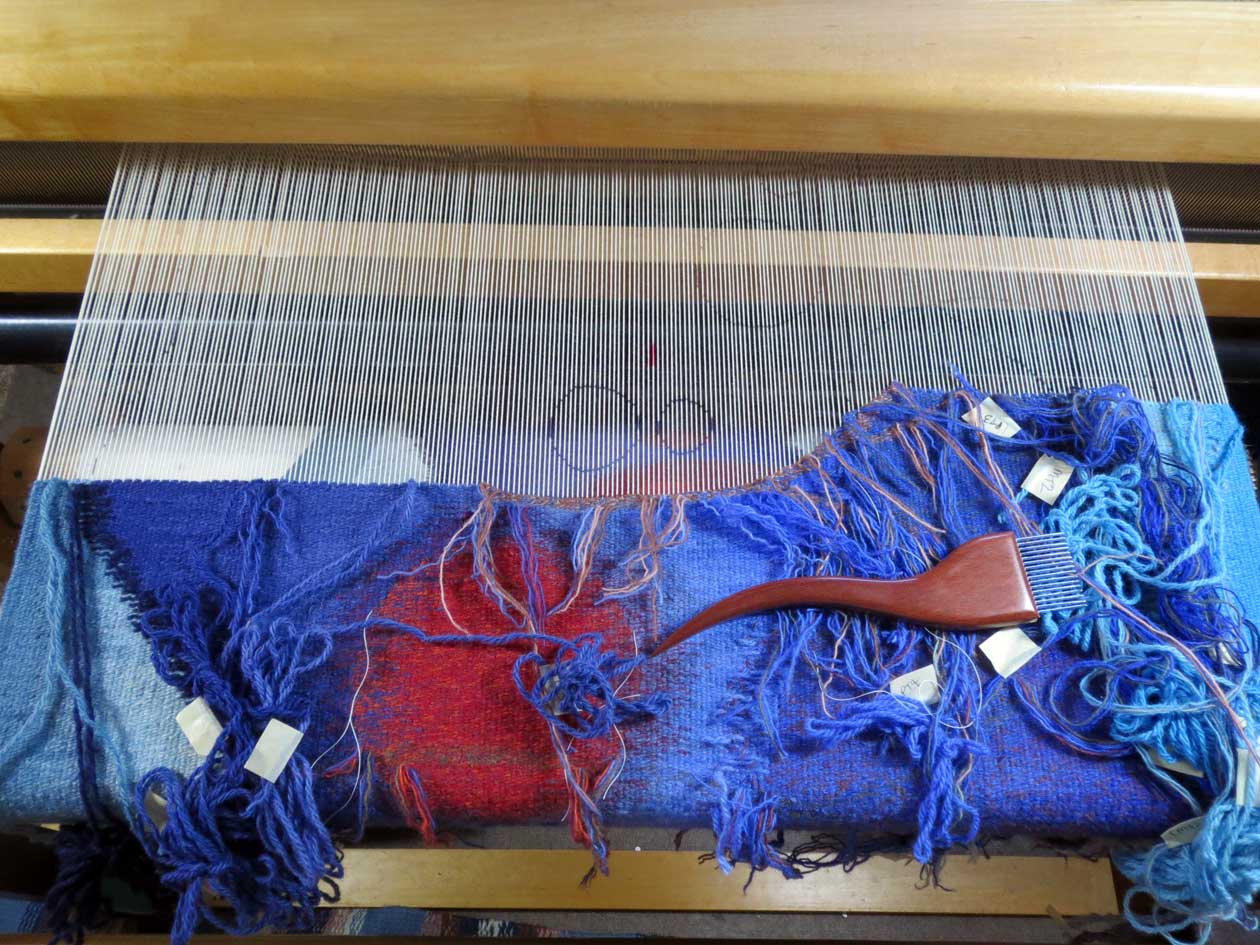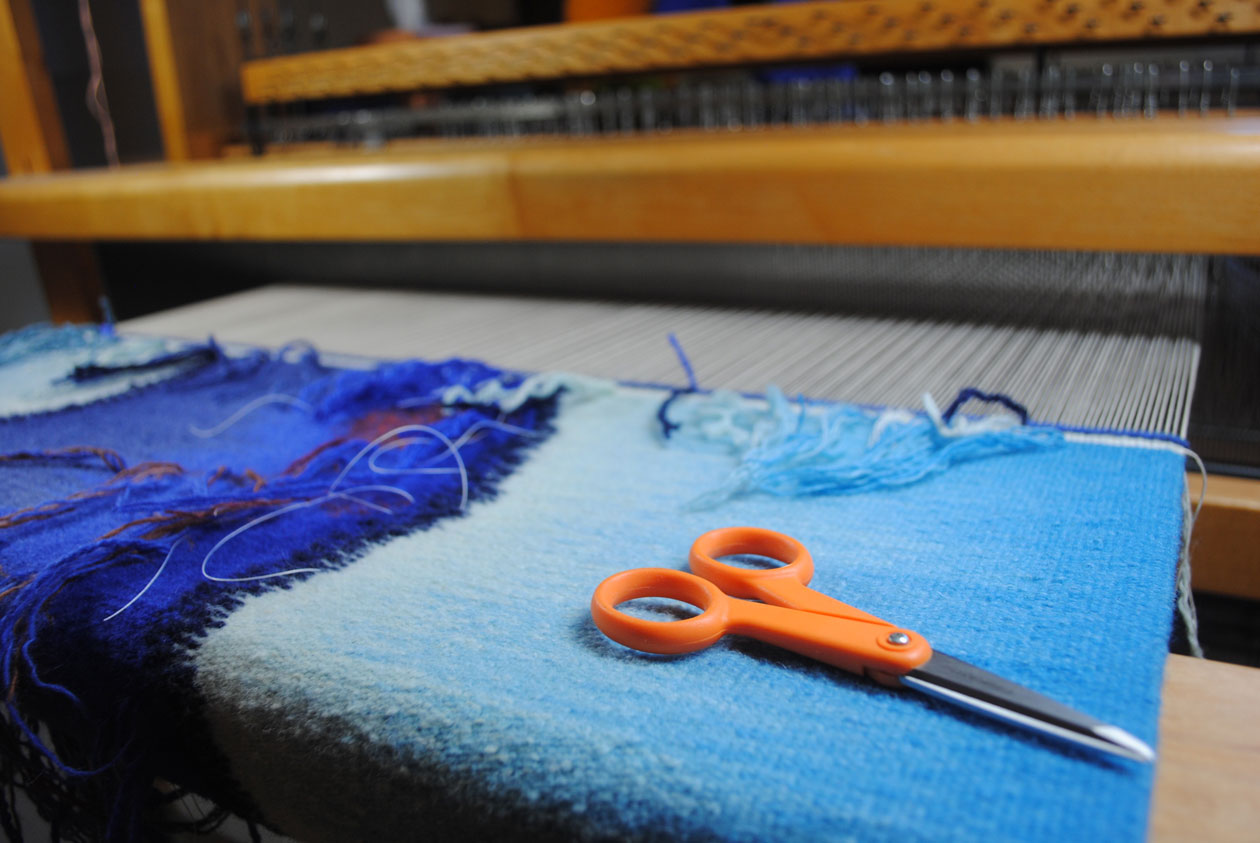This is Lifelines.
The story of this piece is long. Longer than perhaps it should have been. But nevertheless, finally she is released out into the world (with the nudging of a few show deadlines).
Rebecca Mezoff, Lifelines. 72 x 24 inches. Hand-dyed wool tapestry.
I worked on the design for this piece for quite awhile. Probably it was years of picking it up and putting it down in the way that an artist does. I did a lot of refining of it in a Joan Baxter workshop in 2014 and wove the piece in 2015.
I took it off the loom last winter and immediately rolled it up and put it away. I have trouble looking at a new tapestry when it comes off the loom. Sometimes they come off and I know what I'm going to see and it is fine. Sometimes I am not sure and it is best if I don't look too closely for awhile.
My intention was to take it out again in a week or two and do the finishing. But I kept putting it off. I just wasn't sure about the piece. Finally a friend asked to come and see it, so I set up a big table, rolled it out, gave it a good vacuum, and took a look.
It was fine. It was even good. It wasn't what I had in my mind's eye when I designed it. It turned out to be something else. But that something else that was still good. I like to work in series and I will take this idea into a some new pieces sometime next year.
There is great joy in weaving tapestry for me. A sure-fire way to know whether I've been weaving or not is how cranky I am. I'm a veritable joy (ahem!) if I've had time at the loom. If not, hmmm, crabbiness can get a little out of control.
Weaving a tapestry is a long process. My studio becomes full of little piles of butterflies, sticky notes, and yarn balls that are no longer needed for the piece. My feet are constantly tracking the tape tags I use to mark colors around the house and if Emily didn't take pity on me now and then and add the garbage to the house trash, the yarn scraps would overwhelm the whole studio.
I do have a system for keeping the yarn organized. In this case, I had a sheet of paper with the formulas and combinations of singles for each of the main colorways in the piece. Little lines of plied yarn balls marked with tape tags make sure I use the right color in the right place most of the time.
At this point (below photo), things get exciting. I am almost done with the piece and I have to be careful not to rush. Rushing in tapestry equals weft tension problems.
Done.
The last steps are the finishing, mounting, and a trip to the photographer. I like my tapestries to have clean backs, so it takes some hours to deal with the tails. Most of them are stitched back into the weaving to secure them before being snipped off. I use a fairly thin warp for my 10 epi sett and so the resulting textile, when the ends are trimmed, is very fluid. My goal is to create a piece that, though it hangs on the wall, is recognized as a textile. Even though people are not using it functionally, I want it to have a sensuous quality and to move some with the air. So I don't frame my large work. It is mounted only by a bar at the top.
The loom was empty for only a few days... fortunately.









